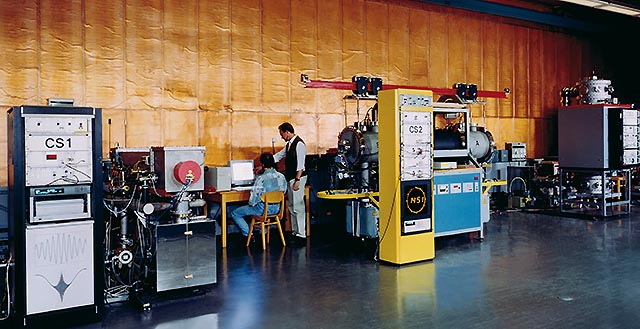
The Oscillation of the Atom
Atomic clocks are not radioactive. They achieve their unbeatable precision by means of the extremely high frequency at which electrons spring into a different orbit around the nucleus. As from 1967, the second was defined in terms of the oscillation of the caesium atom at 9,192,631,770 Hz.
In 1949 the first atomic clock to use ammonia gas was built by Harold Lyons in the US National Bureau of Standards. The first functioning caesium atomic clock, by Louis Essen and Jack Parry, ran from 1955/56 in the National Physical Laboratory of the UK.
The Physikalisch-Technische Bundesanstalt in Braunschweig, which is responsible for the legal time in Germany, possesses one of the most precise atomic clocks today. Its caesium fountain has a theoretical deviation of one second in thirty million years.
This inconceivably high precision is not only necessary for space travel but is also the prerequisite for many applications in everyday life, some of them being the internet and the GPS navigation system.